The FIA/WEC Six Hours of Silverstone was probably the most anticipated endurance race of the century. While there was certainly a lot of interest in the first races of the Intercontinental Le Mans Cup and the World Endurance Championship, and also in the first TUSC rounds at Daytona and Sebring this year, nothing has matched the eagerness with which fans and teams around the world awaited the first round of the 2014 WEC season.
Three manufacturers—Audi, Toyota, and Porsche—were committed to building brand new cars to the new 2104 regulations, cars which depended on electric as well as internal combustion power. With the greatest freedom of propulsion power development coupled with the tightest regulations for fuel usage, this year’s WEC cars showcase the very best of modern automotive engineering.
Fans wanted to see what Porsche could do—the marque is inextricably linked to success in endurance racing, and holds the record for Le Mans wins. Audi has dominated sports car racing throughout the century, only occasionally challenged by the defunct Peugeot team, and recently, by Toyota. And Toyota, which had participated almost half-heartedly in its first two WEC seasons, was finally going to make an all-out effort with its new cars.
Even better, each manufacturer chose a very different solution to the problem of reaching racing speeds using a third less fuel.
Audi stayed with diesel power, increasing the displacement of its turbo-V6 to four liters, coupled with a front-wheel-drive two megajoule flywheel-based hybrid system. Toyota and Porsche each picked the six-megajoule option, which allowed them less fuel but three times the hybrid power.
Even here, the paid chose almost opposite routes: Porsche opted for a 2-liter turbo V4 with a battery storage system, while Toyota went with a larger, lower-revving version of its V8/supercapacitor system. Both teams, like Audi, implemented all-wheel drive for their hybrid motors.
Some fans predicted that the new cars would be slow and the racing would be dull as everyone tried to save fuel. Others pointed out that every year cars get faster as engineers increase their knowledge of applied aerodynamics, tire construction, and engine management.
Practice session for the Silverstone race didn’t really reveal much. The cars were very fast, but didn’t have to meet fuel-mileage standards. Toyota qualified on the pole but only 0.005 quicker than Audi and Porsche was only 0.3 behind—but that didn’t mean a lot; different cars could have been set up for qualifying speed, and others for the race.
Even the teams couldn’t know what the other teams might have in reserve, or what strategies they might use.
Based on sector and trap times, it seemed Porsche was running very low downforce, focusing on its set-up for Le mans rather than trying to win at Silverstone. Audi went the high-downforce route; its pace through the corners was phenomenal: even with the narrower tires mandated by the 2014 rules. Toyota seemed to be the most balanced—pretty quick through the corners, pretty fast on the straights—but who knew what the teams might be saving for race day?
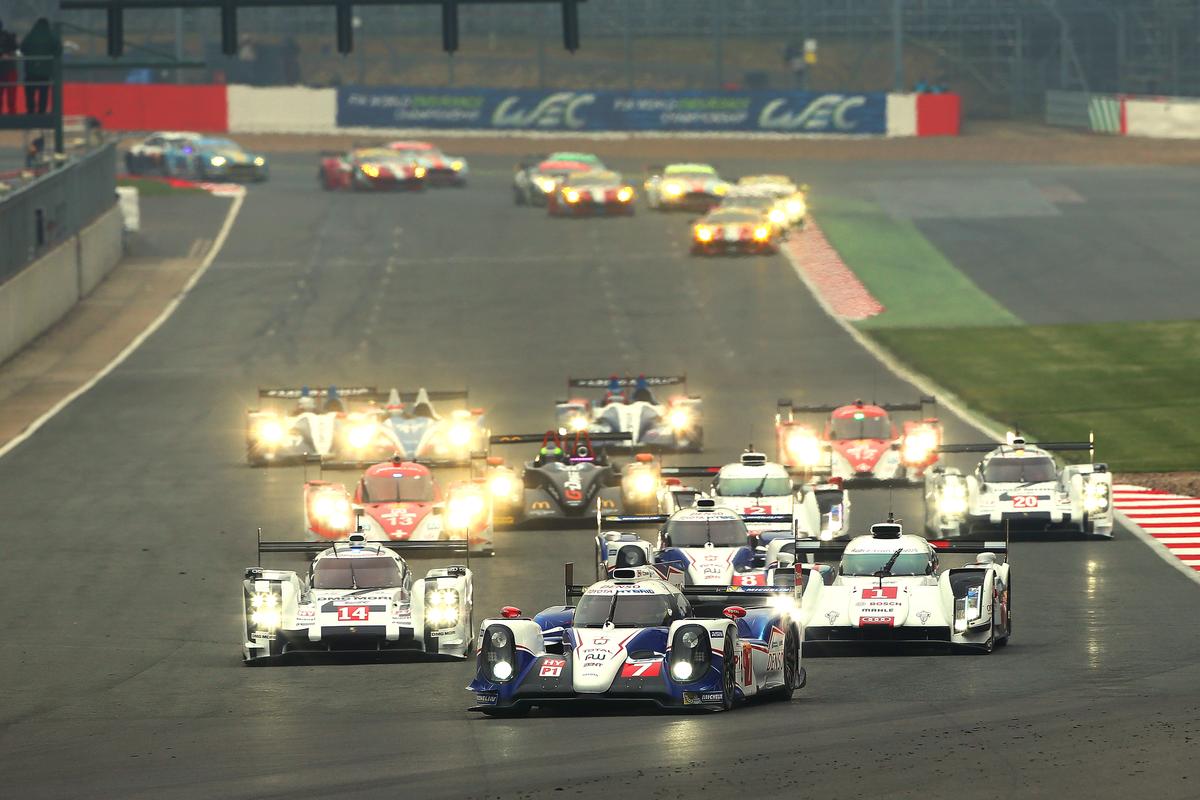
Alexander Wurz in the #7 Toyota TS040 leads the field into the first turn at the WEC Six Hours of Silverstone. (toyotahybridracing.com)
The Race
It wasn’t until the green flag fell that everyone got a chance to see what kind of racing the new regulations would create, and within the first few laps, everyone knew that the 2014 season would live up to the hype.
Right from the drop of the green everyone took off for the first corner like it was a drag race, not an endurance race. Lucas Di Grassi in the #1 Audi tried to pass Alexander Wurz in the pole-setting #7 Toyota, failed and tried again. He ended up losing two positions—but only for a few laps. On lap five André Lotterer in the #2 Audi passed Sébastien Buemi in the #8 Toyota, and Di Grassi followed through. On lap 12 Lotterer took the lead, using slower traffic to trap Wurz in the #7 Toyota.
Light rain started falling after half a n hour of racing, making tire strategy much more important. Both Toyotas pitted for rain tires while both Audis stayed out.
Forty-five minutes into the race, Lucas Di Grassi, his #1 Audi on slicks, slammed into the wall exiting Woodcote corner. He needed a tow to get going before limping back to the pits where the car was retired with a terminally damaged monocoque.
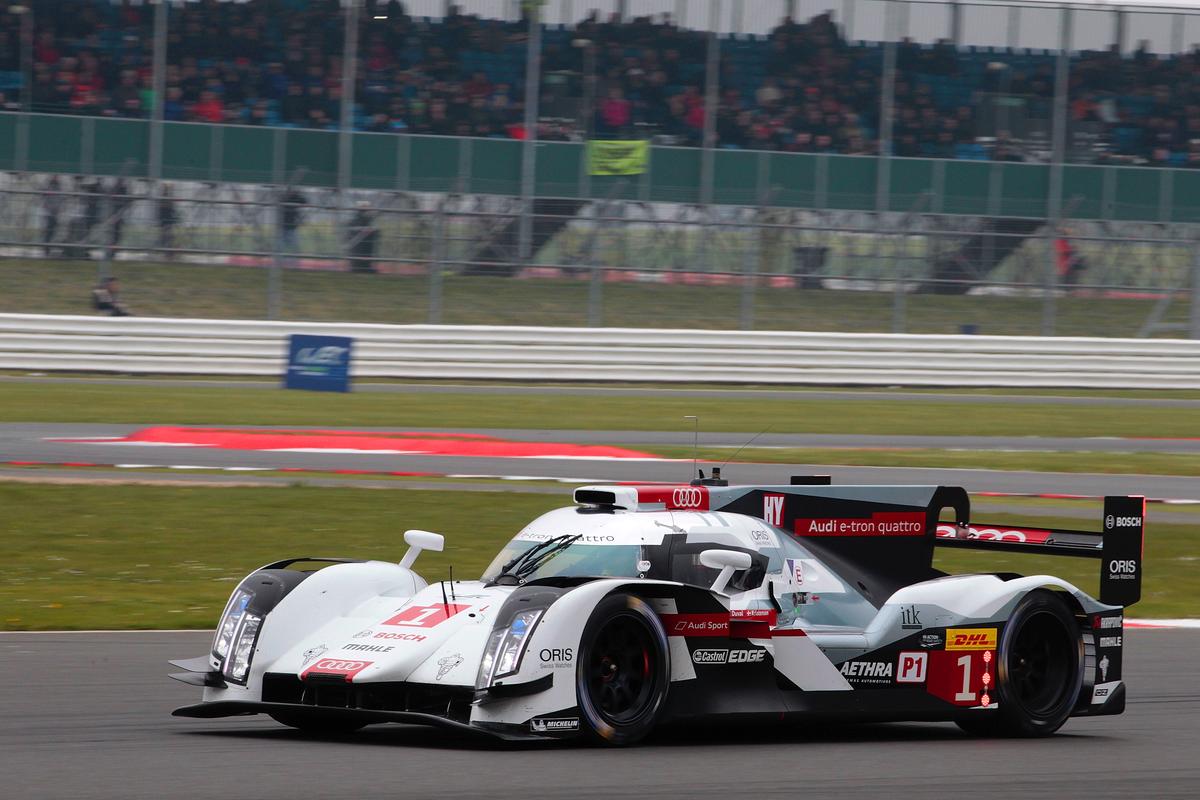
The #1 Audi R18 e-tron quattro only lasted 45 minutes before Lucas Di Grassi slammed the wall at Woodcote. The #2 Audi lasted a few hours before it too ended up wrecked and retired. (Audi Motorsport)
At almost the same moment the #14 Porsche, piloted by Neel Janni, came scraping and sparking its way down pit lane. Somehow it had lost its right front wheel—the whole wheel—after its pit stop for rain tires.
Meanwhile André Lotterer was still struggling around the track on slick tires, losing 25 seconds a lap to the cars on rain tires. Lotterer lost the lead to Sébastien Buemi in the #8 Toyota on lap 26, Audi called him in for fuel only on lap 27 and sent him back out on the same slick tires he had started on, now a lpa down in fourth and still losing huge time to the cars on Wets.
This seemed like a rare strategic error from Audi—and seemed more like it when Lotterer went into the gravel at Stowe corner on lap 33. Lotterer got the #2 Audi back on track with a little help from the marshals, but even further behind.
Neel Jani’s day didn’t get any better. After spending 16 minutes in the pits getting his right front suspension repaired, his #14 Porsche suffered hydraulic failure on lap 39. He crawled home and the car was retired.
Timo Bernhard in the #20 Porsche was having a better day—on lap 39 he overtook Alex Wurz in the #7 Toyota for second place. Bernhard was nearly a lp down on race leader Buemi, and losing a few seconds per lap, but was at least not falling back or spinning off.
Not so Wurz—he spun shortly after losing second and came right to the pits, handing off to Kaz Nakajima who went back out in third place on full wet tires. Nakajima spun trying to go three-wide through a corner on lap 49, but didn’t lose track position.
Bernhard held second until he pitted on lap 53 and Nakajima in the #7 Toyota took the position.
At the end of the second hour, with 64 laps completed, Nicolas Lapierre in the #8 Toyota held a secure minute’s lead over team mate Nakajima in the #7, while the #20 Porsche, now driven by Brendan Hartley was a lap down. Nick Heidfeld in the #12 rebellion Lola-Toyota, last year’s car, was three laps back in fourth, eleven seconds ahead of Ben Treluyer in the surviving #2 Audi.
Treluyer managed to catch Heidfeld on lap 69. The top five then remained unchanged, except for pit stop rotation, until just past halfway.
On lap 98 Treluyer took a little too much left-hand curb with his left rear wheel entering Copse Corner. This unbalanced the car and sent it shooting across the track to slam the right-side barrier and bounce back across the track to end up in the gravel on the left.
Treluyer tried his best to get the Audi going again, but the front end was destroyed. Race Director Eduardo Freitas, who legendarily hates full-course cautions, had no choice but to deploy the safety car to get the Audi out of harm’s way.
On lap 109, after 21 minutes of yellow, the track went green again, with the #8 Toyota a lap ahead of the #7 which was thirty seconds ahead of the #20 Porsche and five laps ahead of the #12 Rebellion.
Not much changed at the front of the race through the next two hours. The gap between the two Toyotas stretched and shrank depending on traffic and tire wear; #20 Porsche lost some ground to the Toyotas but stayed well ahead of the Rebellion.
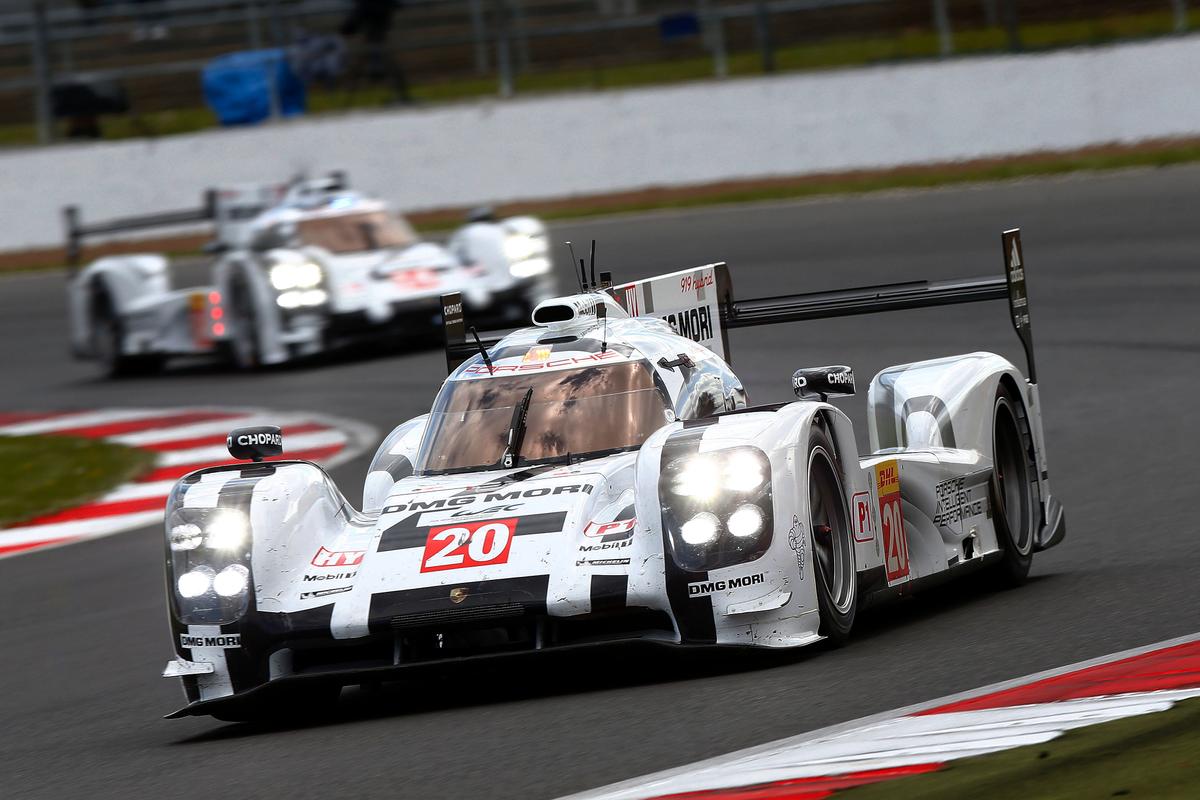
Porsche’s 919 Hybrids had wildly mixed results—the #14 car expired early in the race, and the #20 car captured the final step on the podium at Silverstone. (Porsche AG)
The weather did most of the changing, drying up a little, almost brightening up, then getting progressively darker until rain came back hard and steady with an hour twenty minutes to go.
The rain made everyone rethink their strategy. Teams wanted to wait until their fuel window of about 27 laps to make their final pit stop, but with conditions worsening, everybody finally had to pit for rain tires. Then the question became, how long would the rain last? Would the rain tires last the rest of the race? Would the rain tires last that long? Would teams dare switch to intermediate tires on the last fuel stop?
All hat planning came to naught as Eduardo Freitas sent out he safety car for a second time with forty minutes left in the race. The field circulated slowly for another fifteen minutes before Freitas broke down and waved the red flag.
With the radar showing the weather only worsening and deep pools of standing water on the track, there was no safe way to race, and even if the rain stopped, the track wouldn’t dry enough to be safe within the time remaining.
A few minutes after red-flagging the race, Freitas declared it over.
Toyota finished one–two, followed by Porsche and Rebellion. Toyota got the win through attrition as well as pace. The Audis were about as fast, and had the race stayed dry, who knows how it might have ended? Toyota appeared to have a lap or two in hand in fuel economy, but Audi set the quickest race lap. It could have gone either way.
It didn’t, in part because Toyota had better tire strategy early on, and largely because Toyota’s drivers didn’t make the kind of mistakes Audi’s drivers so rarely make—but made a on this day.
‘Happy With the Result’
Toyota had speed and reliability, the better strategy, and the better drivers. Unquestionably they deserved the win.
“I am really happy with this result and it is a big credit to the team that we can win in the TS040 Hybrid’s first race,“ said Sébastien Buemi in a press release. ”The conditions were very difficult at the end. It was really wet and hard to stay on track even behind the safety car, so I think the race director made the right call to end the race a little early.
“In general the car felt good and this gives us confidence for the rest of the season. But the competition was close and we can expect another big fight in Spa. We will enjoy this great result and quickly focus on the next race.”
Co-driver Nicolas Lapierre credited Toyota’s strategy. “It has been very close since the beginning of the weekend but the team really made a difference today with the strategy,” he said. “It was spot-on and delivered a dream start to the season for the whole team. The team did a good job on strategy and this is a nice reward.
“The first race of the season is always a special occasion so I am particularly proud to win today. It means a lot, not only to win the race but also the Tourist Trophy and join such impressive names.”
Third driver Anthony Davidson agreed: “It has been a fantastic weekend and it is brilliant to win my home race. The team did a fantastic job all weekend.
“It looked like it would be an epic fight with Audi and Porsche if it had stayed dry, but we knew the rain was coming and we had set our car up for wet conditions. We made the right call on tires, the strategy was just perfect; that’s how you win races. It is particularly special to also win the Tourist Trophy and the Richard Lloyd Trophy. It is a fantastic achievement and I couldn’t have wished for a better weekend.”
Porsche only got half its team home, but still has a lot to be proud of. Porsche chose a low-downforce setup, looking ahead to Le Mans, where it really wants to win. Porsche’s engineers knew they were gambling with the weather, but were willing to sacrifice the race win to get data for future wins.
“We could hardly have asked for more. To pick up a podium at the very first attempt at Porsche’s return to the top class of Le Mans prototypes is just great,: explained Timo Bernhard in a press statement. “It was very important to finish the race and make the right calls. This way we have gathered loads of data.
Not only did Porsche test its cars, it tested its drivers. Nothing is more difficult to drive in the wet than a car with low downforce, yet Porsche’s drivers kept their cars on the track; both Toyotas spun a couple times, and both Audis crashed. Porsche’s drivers deserve a large measure of praise.
“It was an amazing feeling to bring the car back after my very first stint as a Porsche factory driver and hand it over to Mark {Webber],“ said rookie Porsche driver Brendon Hartley. ”I had a difficult middle stint with rain on the windscreen. It was difficult to tell where the track was wet and where the line was dry. I didn’t take much of a risk in terms of traffic, and I was careful with the tires too. I am delighted with how this first part of my job went.”
For Audi, the day was a disaster. Not only did both cars crash in the first half of the race, both cars were written off. Audi will have to get two entirely new monocoques and build them up from scratch before practice for the next round at Spa starts on the morning of May 2nd.
Worse still, they scored no pints in either the drivers’ or constructors championships, after dominating the last two seasons. A lot of very pointed questions will be asked once the team gets back to headquarters at Ingolstadt.
“Losing both cars in a race due to accidents is extremely bitter,“ said Audi’s head of motorsports Dr. Wolfgang Ullrich in a press release. ”It’s the first time since Road Atlanta 2011 that we’re going home from a race with the Le Mans prototypes without having scored a single point. But the performance at the beginning of the race was good.
“When it started to rain we trusted our weather radar and waited too long before changing the tires. That was our mistake and, in retrospect, an unnecessary risk. It really hit us at full force.”
If there is an upside to this, it might be that Audi will redouble—or triple—its efforts to be ready for Spa. The team needs data for Le Mans, and the team needs to show that its new cars can compete with Toyota and Porsche.
Racing is a promotional exercise for factories, a very exciting kind of advertising. Toyota got some free ad time, Porsche banked some good material for future ads, and Audi got the worst kind of publicity possible.
Toyota needs to prove that this wasn’t a fluke, that it can beat Audi when Audi doesn’t beat itself. Porsche, as the newcomer, needs to gather data on a dry track so it can be ready for Le Mans, which is far and away the most important race. Audi, after two years of beating a Toyota team with half-hearted factory support, has to prove can beat the competition when it is real competition.
All this will play out at Belgium’s historic Spa-Francorchamps course at the Six Hours of Spa, May 2–3. For more information and to buy tickets visit fiawec.com.

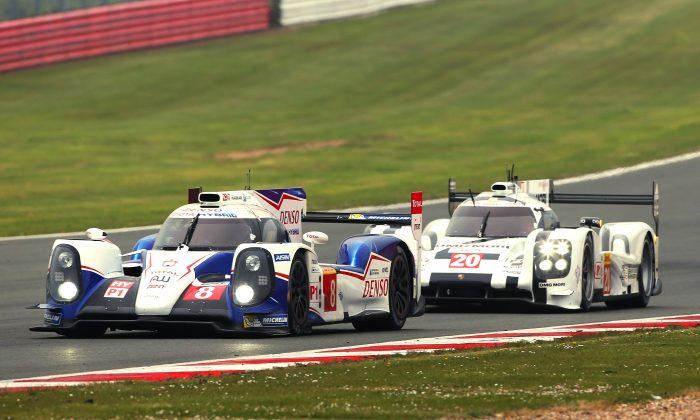

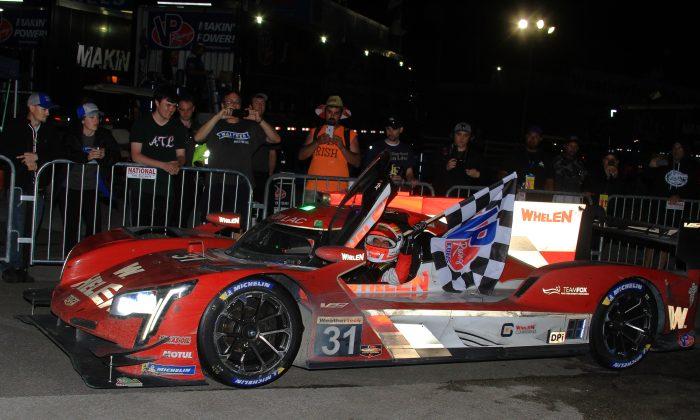



Friends Read Free